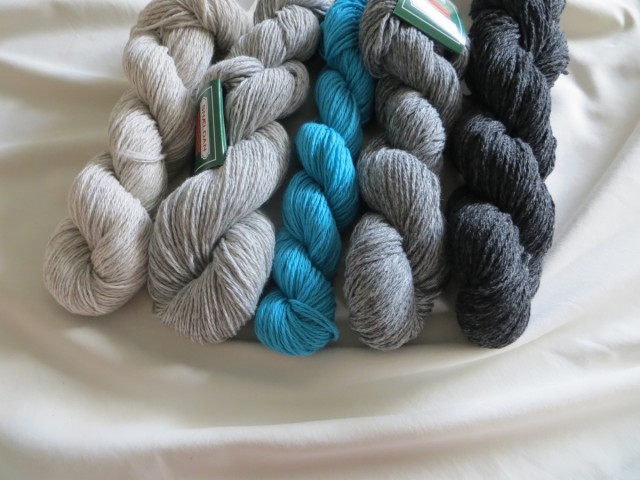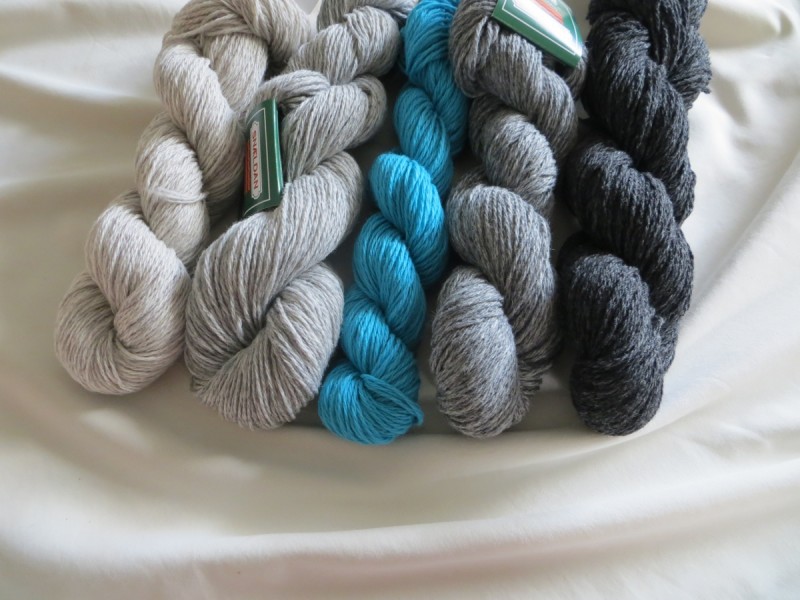You must know it’s difficult to keep your faith. Mine in term of yarn purchase is to “prefer” European ones, and I have the feeling of becoming more and more finicky and demanding, as for the origin, place and process of production, and this reduces the scope of choice.
I’ve however bought recently a yarn “mostly” European, and I’d like to share it with you!
The yarn in question is, as says the entry title, from the Faeroe Islands – I’d wondered by the way what was the adjectif related to! – and called Snældan Nappað tógv 3tr – how to pronounce it (lol)?. It can also be called Snældan 3-ply, simply 🙂 It’s made from fleece of Faroe sheep, a local native breed, raised in these islands, and seems to be produced there, by a… fjord!
But where on earth are Faeroe islands? And what looks like these sheep? Those are the questions I asked myself and I’ve done a little search.
First the Faeroe islands. They are in short between Great Britain and Iceland, in the middle of the European side of North Atlantic Ocean, a little cut off from the rest of the world. And Faroe sheep belong to Northern Europe short-tailed sheep family, of which Icelandic or Shetland sheep are well-known members. They were brought to these isles by Vikings, and because of the distance between them and from the Continent, they’ve kept their primitive genes and characteristics. In addition to the short tail, their common trait is the dual coat: outer coat with coarse, long guard hair and soft and downy inner coat.
And unlike Icelandic lopi wool spun with these two types of wool, Snældan is made from this soft coat, cleared of outer hair with combing. The wool is then blended with wool from Falklands, and spun and plied.
You should know that this is a violation (!) of my convictions, but I must say that it’s quite difficult to avoid Falkland wool when you want to buy affordable European yarns.

These yarns, bleu one excepted of course!, are not dyed. I learned that Faroe sheep are naturally white, black and grey, sometimes brown, and these shades of grey are natural color of their wool.
 I cite here my source: The Fleece and Fiber Sourcebook !
I cite here my source: The Fleece and Fiber Sourcebook !
This guide is written par two Americans, a farmer and a fiber magazine editor, and provides a complete overview on sheep breeds of the world. The book is rather for spinners, but if you’re a fiberphile, your curiosity will be satisfied!
(the image will redirect you to a online bookstore based in the UK, which offers a worldwide free shipping, and they pay their tax in the UK! (Down with Axaxon!) )
You’ll find also information about this yarn at The Island Wool Company (they seem to be a official wholesaler in the UK).
Let’s get back to our sheep (meaning business, I love this French expression)!
I bought these grey yarns to knit two lopi sweaters to replace Lett-Lopi, spun with guard hair and too itchy for me. Two light greys (#2 and #3) are the MCs of each pullover, and I knitted a swatch of #3.
When I was knitting, the yarn was soft but a little dry and rustic. But the washing has transformed it! It’s got much softer, downier, plumper.

And I looooove this silver grey!
I bought this yarn at Laines des îles, an online store recently open by Yasmin and specialized in the yarns from the isles and the North of Europe (Britain isles, Faeroe, Iceland, Sweden). She has made an exception offering Falklands wool. But if you want to buy European, her shop is a precious ally!
I’d never thought I’d buy one day Feroese yarn, and I’m really happy to work with this yarn. Thank you Yasmin!

